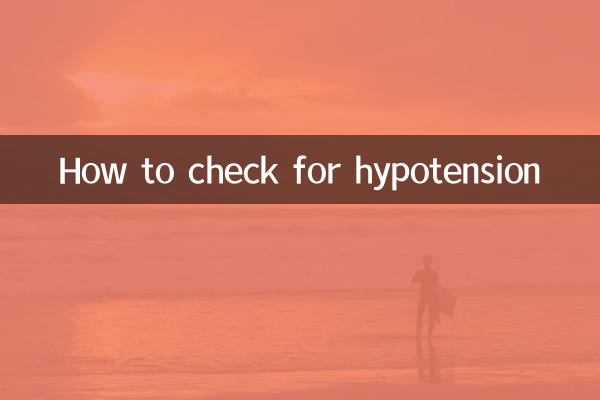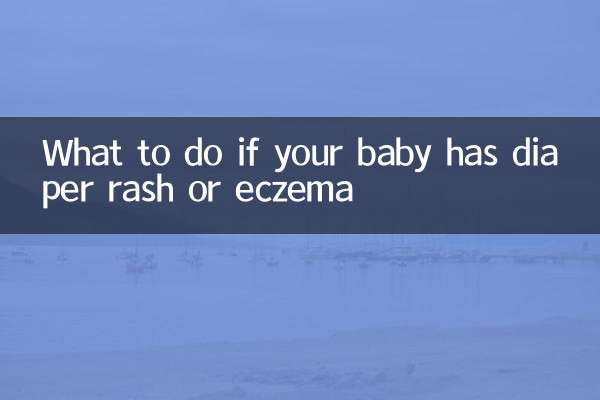How to check for hypotension
Hypotension is blood pressure below the normal range, usually defined as systolic blood pressure below 90 mmHg or diastolic blood pressure below 60 mmHg. Low blood pressure can be caused by a variety of reasons, including dehydration, heart problems, endocrine disorders, and more. To accurately diagnose hypotension, doctors usually perform a series of tests. The following is a compilation of relevant content on hypotension examinations that have been hot topics on the Internet in the past 10 days.
1. Common symptoms of hypotension

Before checking for low blood pressure, understanding its common symptoms can help determine whether you need medical attention. The following are typical symptoms of low blood pressure:
| symptom | describe |
|---|---|
| dizziness or vertigo | Especially when standing up suddenly from a sitting or lying position |
| fatigue | Feeling unusually tired, even after resting |
| nausea | May be accompanied by dizziness or vomiting |
| blurred vision | Temporary vision loss or blurred vision |
| Fainting | In severe cases, you may suddenly lose consciousness |
2. How to check for hypotension
Testing for hypotension usually includes the following aspects:
| Check items | Specific content | Purpose |
|---|---|---|
| blood pressure measurement | Use a sphygmomanometer to measure systolic and diastolic blood pressure | Check if blood pressure is below normal range |
| blood test | Test blood sugar, electrolytes, thyroid function, etc. | Check for anemia, diabetes or endocrine problems |
| Electrocardiogram (ECG) | Record electrical activity of the heart | Check for arrhythmia or heart disease |
| Tilt table test | Monitor blood pressure and heart rate changes on the tilt table | Diagnosing Orthostatic Hypotension |
| echocardiogram | Examine heart structure and function with ultrasound | Assess the heart's ability to pump blood |
3. Diagnostic criteria for hypotension
According to World Health Organization (WHO) criteria, the diagnosis of hypotension is usually based on the following data:
| Blood pressure classification | Systolic blood pressure (mmHg) | Diastolic blood pressure (mmHg) |
|---|---|---|
| normal blood pressure | 90-120 | 60-80 |
| hypotension | <90 | <60 |
| severe hypotension | <80 | <50 |
4. Prevention and daily management of hypotension
In addition to medical examinations, some measures in daily life can also help prevent and manage hypotension:
| measure | Specific methods |
|---|---|
| Increase water intake | Drink at least 8 glasses of water a day to avoid dehydration |
| diet modification | Increase salt intake appropriately (doctor’s guidance required) |
| change position slowly | Avoid standing or getting up suddenly |
| regular exercise | Enhance cardiovascular function and improve blood circulation |
| wearing compression stockings | Help blood return and reduce congestion in lower limbs |
5. When do you need medical treatment?
It is recommended to seek medical attention immediately if:
1. Frequent dizziness or fainting
2. Accompanied by chest pain or difficulty breathing
3. Blood pressure continues to be lower than the normal range and symptoms worsen
4. Suspected to be related to drug side effects
Although hypotension is common, it should not be ignored. Through scientific examination and daily management, symptoms can be effectively controlled and quality of life improved. If you have relevant symptoms, it is recommended to consult a doctor in time for targeted examination and treatment.

check the details

check the details